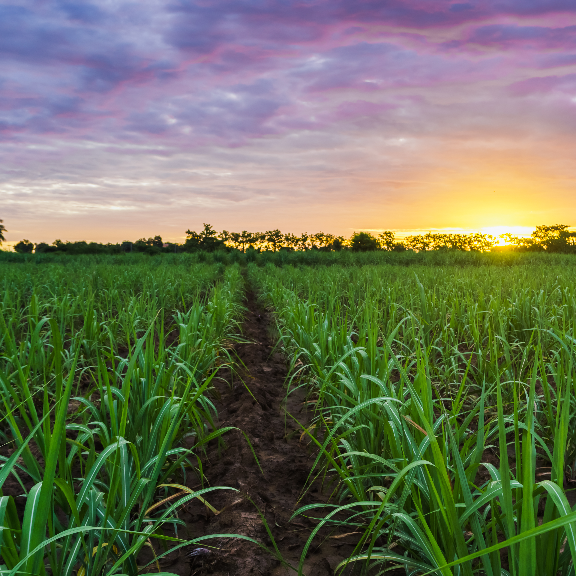Part 1 - Primary Production
Part 1: Primary Production
Scope: Part 1 of the Kenya Standard KS 2977, titled "Primary Production," establishes comprehensive guidelines for the cultivation of sugarcane. It aims to promote sustainable agricultural practices, ensure food safety and quality, enhance worker safety and welfare, and encourage environmental protection. This part of the standard applies to all stakeholders involved in the initial stages of sugar production, including growers, cooperatives, and agricultural extension services.
Key Areas Covered:
-
Land Preparation and Planting:
- Soil Testing and Preparation: The guidelines emphasize the importance of conducting thorough soil tests to determine nutrient content, soil structure, pH levels, and other factors crucial for optimal sugarcane growth. Soil preparation should include appropriate tillage methods to improve soil aeration, water retention, and reduce compaction.
- Variety Selection: Recommendations are provided for selecting sugarcane varieties that are well-suited to local environmental conditions, such as climate, soil type, and resistance to pests and diseases. The guidelines suggest consulting with regional agricultural research institutions for the best variety recommendations.
- Planting Techniques: Proper planting techniques are outlined to ensure optimal cane establishment. This includes guidelines on planting density, spacing, depth, and timing, which are critical to maximizing germination rates and achieving high yields. The use of certified seed cane and following best practices in field layout are encouraged to ensure uniform growth and reduce the risk of pest infestations.
-
Crop Management:
- Irrigation: The guidelines provide recommendations for efficient irrigation practices to ensure adequate water supply for sugarcane growth while conserving water resources. Techniques such as drip irrigation are promoted to optimize water use efficiency and minimize wastage. Proper scheduling of irrigation based on crop water requirements and soil moisture levels is emphasized.
- Fertilization: The standard outlines best practices for fertilization, including the application of fertilizers based on soil test results and crop nutrient requirements. The use of organic fertilizers and integrated nutrient management practices is encouraged to maintain soil fertility and health, reduce chemical inputs, and enhance sustainability.
- Weed Control: Effective weed management is crucial for optimal sugarcane growth. The guidelines recommend integrated weed management strategies, including manual weeding, mechanical cultivation, and the judicious use of herbicides. Emphasis is placed on using herbicides that are environmentally friendly and approved by relevant authorities.
- Pest and Disease Management: The guidelines provide strategies for managing pests and diseases through an integrated pest management (IPM) approach. This includes the use of biological control agents, cultural practices, and minimal use of chemical pesticides. The objective is to reduce pest populations to economically manageable levels while minimizing the impact on the environment and non-target organisms.
-
Harvesting:
- Timing and Techniques: Recommendations are provided for harvesting sugarcane at the optimal maturity stage to maximize sugar content and quality. Guidelines include cutting the cane at ground level to minimize stubble height, using sharp tools to reduce damage, and properly topping and de-trashing the cane.
- Handling and Transport: Best practices for handling and transporting harvested cane are outlined to prevent damage and losses. This includes using clean, food-grade equipment and vehicles, minimizing delays in transportation, and protecting cane from contamination during transit.
-
Worker Safety and Welfare:
- Protective Equipment: The guidelines mandate the provision of personal protective equipment (PPE) to all workers involved in sugarcane cultivation. This includes gloves, boots, hats, and protective clothing to safeguard against injuries, chemical exposure, and harsh environmental conditions.
- Health and Safety Standards: The standard requires adherence to national labor laws and international standards to ensure safe working conditions for all employees. This includes regular health checks, provision of clean drinking water, sanitation facilities, and proper training on safe working practices and emergency response.
-
Environmental Sustainability:
- Soil Conservation: Recommendations for soil conservation practices, such as contour farming, cover cropping, and mulching, are provided to prevent soil erosion, maintain soil fertility, and enhance water retention.
- Water Management: Guidelines emphasize efficient water use through proper irrigation scheduling, rainwater harvesting, and the use of water-saving technologies to minimize water wastage and ensure sustainable water resources management.
- Biodiversity Conservation: The standard promotes the conservation of biodiversity by encouraging the preservation of natural habitats, the use of indigenous plant species for agroforestry, and the protection of beneficial organisms.
-
Record Keeping and Documentation:
- Documentation: The standard requires comprehensive record-keeping for all activities related to sugarcane cultivation, including planting, fertilization, irrigation, pest control, and harvesting. Proper documentation ensures traceability, compliance with regulatory requirements, and facilitates continuous improvement in farming practices.
- Compliance Monitoring: Regular monitoring and evaluation of farming practices are encouraged to ensure compliance with the guidelines. This includes self-assessments, audits, and corrective actions to address any non-compliance or areas for improvement.
Please download the file here

